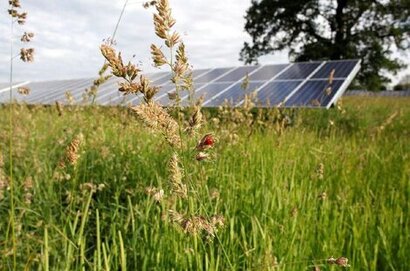
The state-owned company’s analysis of how the country can slash gas-powered generation is not of the depth that Solar Energy UK expected, and the trade association had little opportunity to contribute to it, in contrast to the thermal power sector.
“Solar Energy UK is very concerned that the potential for solar and energy storage has been underplayed in NESO’s Clean Power 30 scenarios and urge the Government to ask some searching questions about the assumptions used” said SEUK Chief Executive Chris Hewett. “It is impossible to see how the growth of rooftop solar and batteries, on homes, factories and warehouses has been taken into account. Solar farms are the lowest cost and fastest to deploy power generation in the country, many with co-located batteries. Yet the NESO scenarios have no deployment range for solar at all and a conservative range for batteries. This betrays, at best, an oversight, at worst, a fundamental misunderstanding of their potential.”
The use of an old and inaccurate figure (15 GW) for the UK’s solar generation capacity is also of concern. This is currently 17.1 GW according to official figures, though the industry believes that the true figure is now approaching 20 GW, up from 17.8 GW at the end of 2023. The discrepancy, acknowledged by the Climate Change Committee earlier this year, is due largely to major rooftop installations (such as on warehouses and supermarkets) not been tracked well by the Department for Energy Security and Net Zero.
Accordingly, SEUK anticipates that the deployment of solar and battery energy storage technologies will be even faster than outlined by NESO.
Defining Labour’s clean power goal as unabated gas supplying only 5 percent of Great Britain’s power over a typical year, the report states that there is “no path” towards the goal without the mass deployment of solar energy and other renewables. Both scenarios set out in the report assume that the country will reach 47.4 gigawatts of solar generation capacity, less than the 50 GW outlined by Labour prior to the general election and less than there is in the queue for grid connections.
NESO also sees at least 22.6 GW of battery energy storage in 2030, rising to 27.4 GW in its ‘Further Flex and Renewables’ pathway, up from 4.7 GW in 2023.
“We have every confidence that the solar and battery energy storage industries will exceed the figures outlined by NESO report today, delivering cheaper, greener and more secure energy for the nation” added Mr Hewett.
Despite its problems, SEUK nevertheless agrees with NESO’s conclusions that clean power by 2030 is both achievable and beneficial, lessening the chance of price spikes, cutting air pollution and carbon emissions, lowering cooling water consumption, delivering economic growth – and all without an increase to consumer bills.
“Doing so hinges on accelerating new transmission infrastructure, reforming planning and consenting processes and reforming electricity market structures “while ensuring a stable and attractive investment environment” says the report.
The next steps will be for the Government to consider the report and draw up its own definition of clean power and plan to deliver it, which will feed into NESO’s Strategic Spatial Energy Plan and reforms to managing the grid queue.
The practical measures that needed to further accelerate the growth of the solar industry will be outlined early next year, in the Solar Taskforce’s Solar Roadmap. This will cover how the UK should cut waiting times to connect to the grid, deliver skills and training for the future solar workforce, tackle myths and misinformation and cut regulatory and other barriers for rooftop installations – such as reforming planning rules in conservation areas and enabling access to finance. Another focus will be on maximising domestic supply chains solar energy, such as the production of mounting brackets, cabling and battery energy storage systems.
Solar Energy UK looks forward to working with NESO, the Government and other stakeholders to make clean power by 2030 a reality.
For additional information:

